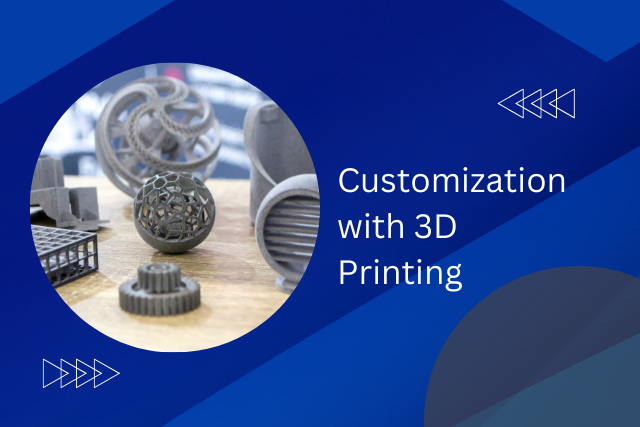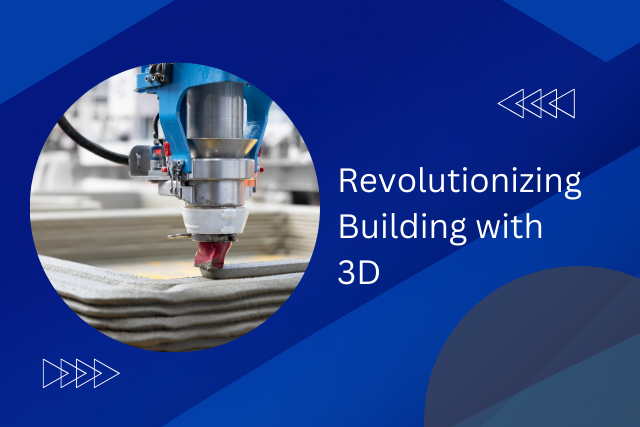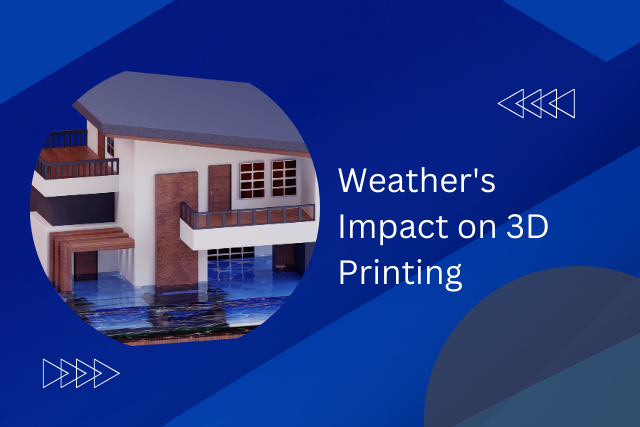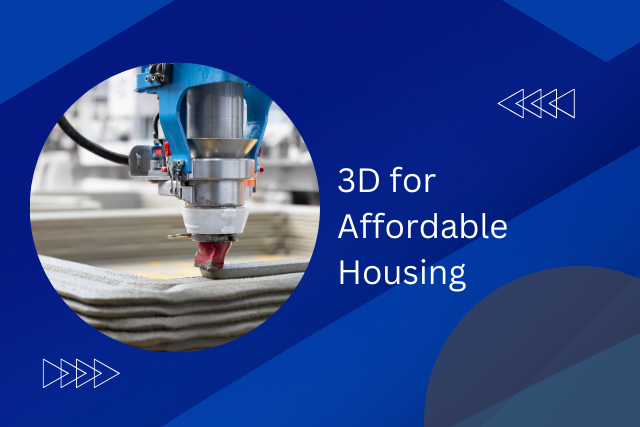The growth of 3D home printers is bringing new features that change how we make things at home. These printers can now use multi-material printing, which lets us make complex items that have different parts with different properties all in one go. They work faster and with more detail, making them more useful and flexible.
With new software, the ability to print from anywhere, and better ways to print in color and include electronics inside objects, these printers are becoming more independent and capable of doing more creative things. We’re looking at how these advanced 3D printers will change making things at home and what chances they give to people who like to create new things and to small business owners.
Multi-Material Printing
The latest 3D home printers have a really cool feature where they can print with more than one material at the same time. This means you can make objects that are complex, work well, and look great, all in one go. It’s a big step up from older printers that could only use one material. This new ability lets people mix different textures, colors, and properties all in one item, making it possible to be more creative and make things that are more useful.
People who come up with new products or run businesses will find this really helpful. It lets them create unique products that fit exactly what their customers want, which can make customers happier and more likely to come back. Also, this technology makes making things simpler and faster, which means businesses can get their products ready quicker and do more work in less time. In short, multi-material printing not only makes 3D printers much better but also gives people the chance to try out new ideas and make cool things easily.
Enhanced Precision
As we transition to the topic of Enhanced Precision, it is paramount to acknowledge the significant strides made in improving resolution levels and advancing material compatibility in next-generation 3D home printers. These technological advancements enable the creation of intricate designs with remarkable accuracy, setting a new benchmark for quality and performance. The implications for both consumer and industrial applications are profound, opening avenues for innovation across various sectors.
Improved Resolution Levels
Next-gen 3D home printers are now much better at making objects with fine details. This is because they use smart software and better hardware, making things look sharper than ever. These printers can create very thin layers, less than 20 microns, which makes the surface of printed items smooth and lets them include tiny details. This used to be something only big, professional machines could do. Also, they have better stepper motors and laser systems which help in making sure every layer is placed just right, reducing mistakes.
This big jump in how well these printers work lets people make complicated and high-quality designs easily. Today’s inventors and hobbyists can now make what they imagine without having to hold back, all thanks to these new improvements.
Advanced Material Compatibility
The latest 3D home printers are now better than ever. They can work with many different types of materials very precisely. This is great news for both entrepreneurs and hobbyists because they can try out new ideas and make things without being held back by old ways of making stuff. These printers can use everything from bendy filaments to mixed materials, letting people make more complicated, strong, and useful items.
The high skill of these printers lets users turn their digital ideas into real things with great detail, starting a new time of making products that only depend on what someone can think up. This jump in technology makes making things more open to everyone, giving a creative space and a tool for making new things right at your fingertips.
Increased Speed
As we transition to the discussion of ‘Increased Speed’ in next-generation 3D home printers, it’s crucial to highlight the significant advancements made in accelerating printing techniques. These developments not only enhance time efficiency but also introduce a range of speed optimization strategies that redefine the boundaries of rapid prototyping and manufacturing at home. Understanding these improvements is essential for entrepreneurs and technologists seeking to leverage the full potential of 3D printing technology in various applications.
Accelerated Printing Techniques
Next-gen 3D home printers are now much faster because they use new, quick printing methods. These changes are a big step forward. They let both business people and people who do it for fun make their ideas real much quicker than before. This big change makes people more productive and gives them the chance to try new things and make changes easily.
Here are some of the quick printing methods and their benefits:
- Layer-Free Printing: This method gets rid of the lines you can see between layers, making the finishing step quicker.
- Continuous Liquid Interface: This method makes printing a lot faster by making the hardening step more efficient.
- High-Speed Sintering: This allows for quicker printing of items with complicated shapes.
- Adaptive Mesh Optimization: This saves time by adding details only where they are needed.
- AI-Powered Predictive Maintenance: This helps avoid long pauses, making sure the printer works fast all the time.
These methods together change how fast we can make prototypes and personal items, starting a new time of doing things quickly and creatively.
Time Efficiency Improvements
The arrival of new 3D home printers has made printing things much faster, letting people create something from just an idea to a real thing quickly. This is really important for entrepreneurs and people who like to make new things because they can try out their ideas and get them out to people faster than before. These printers cut down on a lot of waiting time, so users can try things, maybe fail, but then try again and succeed quicker.
This big change is great for making new products, making things just for you, and making things by yourself. This jump in how fast we can do things is a big deal. It changes how we think about making things from ideas into real, touchable objects, making it easier to turn what we imagine into what we can hold.
Speed Optimization Strategies
Using smart methods, the latest 3D home printers work much faster, making it easier to turn ideas into real things. These printers are built for people who like to create new things, using new tech to make printing fast without losing quality. They use a smart way to change the thickness of layers as they print, which makes printing detailed shapes quicker. Also, they have better parts, like quicker moving motors and heating parts that work faster, which cuts down on the time needed to get ready and to print.
These strategies for making printing faster give people the chance to try out new ideas and make new things more quickly. By cutting down the time it takes to go from an idea to a real object, these 3D printers make it possible for more people to make things and encourage more people to think big and create new things.
In short, these printers change the game by making it faster and easier for anyone to bring their ideas to life.
Larger Build Volumes
The latest big change in 3D printers for homes is they now have bigger build volumes. This means people can make bigger and more complex things than before. With more room to work, users can take on big projects that used to be too much for smaller printers. This big step helps make it easier for everyone to make things that match their own ideas without being held back by the size of the printer.
For those looking to start their own business, this change is great news. It means they can start small manufacturing or custom-making businesses more easily. They can make unique or special items without spending a lot of money. Being able to print bigger parts is also good because it means the things made have fewer pieces put together. This can make them stronger and look better.
Also, printing big objects all at once can save time and materials. This progress in 3D printing technology is a big move towards giving people more control over what they design and make.
Advanced Software Integration
As 3D printing technology gets better, the way it works with software is becoming very important. This makes it easier for people to design and make things right from their homes. Now, both hobbyists and business owners can quickly turn their ideas into real objects without the old-school factory methods. These smart software tools adjust the printer settings on their own to make sure materials are used wisely and the final product is strong.
Also, cloud-based 3D printing is making it possible for everyone to use top-notch design tools. People can work together, share, and improve their designs from anywhere in the world. This way, everyone’s ideas help make each other’s work better. The software can also work smoothly with many different tools for making things, leading to new ways of making that mix adding and cutting materials together.
In short, the mix of new 3D printers and smart software is not only making better and more complex things possible but also helps people who want to make their own way in the world of making and selling things.
Eco-Friendly Options
In the realm of next-generation 3D home printers, the integration of eco-friendly options marks a pivotal advancement. Innovations in sustainable material use, alongside significant enhancements in energy efficiency, set the stage for a greener manufacturing process.
Furthermore, these advancements are complemented by strategies aimed at reducing waste production, reflecting a holistic approach to environmental sustainability in 3D printing technology.
Sustainable Material Use
3D home printers are getting better at using sustainable materials. This is a big step forward in making things in a way that’s good for the planet. These printers are not just about making stuff; they also help take care of our environment. They use materials that can break down, be recycled, or come from sources that don’t run out, which means people can make things without harming the planet so much.
| Material Type | Benefits |
|---|---|
| Biodegradable | Creates less trash, can turn into compost |
| Recycled | Uses less new stuff, helps keep things in use longer |
| Renewable | Comes from sources that can be replaced, doesn’t use up the earth’s resources too much |
This change in how materials are used helps people who make things to think about the planet. It mixes new technology with caring for the earth, leading to a new way of making things that is good for both freedom and the planet.
Energy Efficiency Enhancements
Building on using sustainable materials, the new updates in 3D home printers focus a lot on being more energy efficient. This means they are better for the environment because they use less power but still work really well. These modern printers have smart ways to use less energy, making sure they do a lot without needing too much power.
They also have better ways to manage heat, so they don’t waste electricity and the parts of the printer last longer. What’s more, these printers can work with renewable energy like solar panels, making them able to produce things without needing outside power sources.
Reduced Waste Production
The latest 3D home printers are great for the environment because they cut down on waste. These printers are really careful with how much material they use and can work with biodegradable filaments, which are better for the planet.
They also have a cool feature that lets people recycle used materials. Instead of throwing stuff away, you can turn old prints into something new. This is a big step in making things in a way that doesn’t hurt the earth. These printers are perfect for people who care about being eco-friendly and want to make things without creating a lot of waste. They help us make products in a cleaner way, which is good for our planet.
Remote Printing Capabilities
3D home printers have gotten better, letting people start and control printing jobs from far away using the internet. This new tech lets anyone, from business owners to people who do it for fun, make their designs real no matter where they are in the world. Thanks to the Internet of Things (IoT) tech, these printers can connect to your home internet. You can watch and control them with your phone or computer.
| Feature | Benefit |
|---|---|
| Cloud Integration | Lets you get to your printing jobs from any device that can go online. |
| Real-time Monitoring | You can watch how your printing is doing from afar, making sure it’s all good. |
| Automated Alerts | Sends messages if your printing is done or if something went wrong, so you can fix it fast. |
| Scheduled Printing | Helps you decide when to print, thinking about when you’re free or when electricity is cheaper. |
| Multi-Device Access | Lets more than one person use the printer, making it easier to work on projects together. |
Being able to print from anywhere makes things a lot easier and helps people do more with their ideas, making the world of 3D printing better and more creative.
Color Printing Innovations
New improvements in color printing technology have greatly improved what 3D printers at home can do. Now, these printers can create objects with amazing detail and a wide range of colors. This big step forward lets people be more creative and make complex designs with many colors right from their homes. It’s great for personal use and also helps business people make detailed prototypes quickly, something that was hard to do before at home.
The key to these improvements is the use of better color mixing and deposition methods. These methods mix colors right when the printing is happening. This means objects come out of the printer in full color, without needing extra painting or finishing. Also, the colors match very well, so designers can make their projects look just like their digital plans.
For people wanting to start their own business, this is a big deal. It cuts down on the time and money needed to start selling new products. Now, they can make detailed prototypes easily, helping them create new things and change industries with their unique products.
Embedded Electronics
Putting electronics inside 3D printed objects is starting a new chapter in making things, which lets people make smart, useful products at home. This big change means that regular people can turn into makers, using 3D printing and embedded electronics together to create unique devices that meet their own needs or new ideas. These technologies work together well, making it easy to add electric parts inside printed items, saving time on putting things together and making the final product neater and smaller.
For both entrepreneurs and hobbyists, this offers a chance to quickly make and try out new inventions, in a way that old-fashioned making can’t keep up with. By adding things like sensors, LEDs, and other electronic bits while printing, makers can make objects that do something on their own, like wearable health monitors or smart home devices, all from their own workspaces.
The arrival of advanced 3D printers that can handle electronics marks a big move towards making innovation open for more people. It gives everyone the chance to make their big ideas real, connecting what they can imagine with what they can actually make, without the limits of old-school making.
Improved Durability
New 3D home printers are changing how we make things at home. They make things that last longer because they use special materials and ways of putting layers together. This means people can now make strong and detailed items at home. This is great for people who like to make things and for those who want to start a business, as they can make strong prototypes and products easily.
These printers use materials like carbon fiber filaments, flexible thermoplastic polyurethane (TPU), and reinforced composites. These make the printed items strong, bendy, and able to last a long time. Better ways to stick the first layer to the print bed and cooling the item as it prints also help make the items stronger.
For people who want to make new things or get into new business areas, being able to quickly make strong items is very helpful. It saves time and money in making new products, letting business people quickly meet what customers want. So, the strong items made with these new printers are not just a step forward in making things; they open up new chances for making and inventing at home.
Conclusion
Next-generation 3D home printers have gotten a lot better at making things. They can now print with many different materials at the same time, are more accurate, work faster, and can make bigger items. These printers also come with better software, can be used from far away, and can print in color. They can even put electronics inside the things they print. Plus, these printers last longer. All these improvements mean more people can make things easily. This is great for people who want to start their own business or invent new things in different fields.






